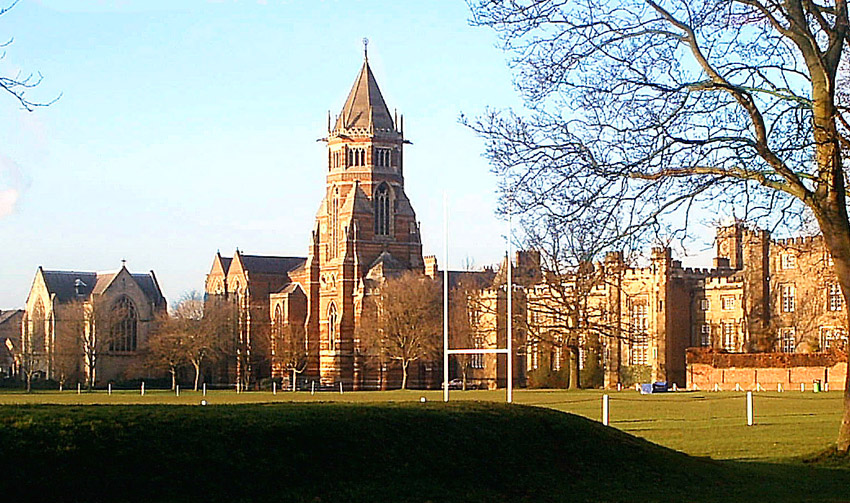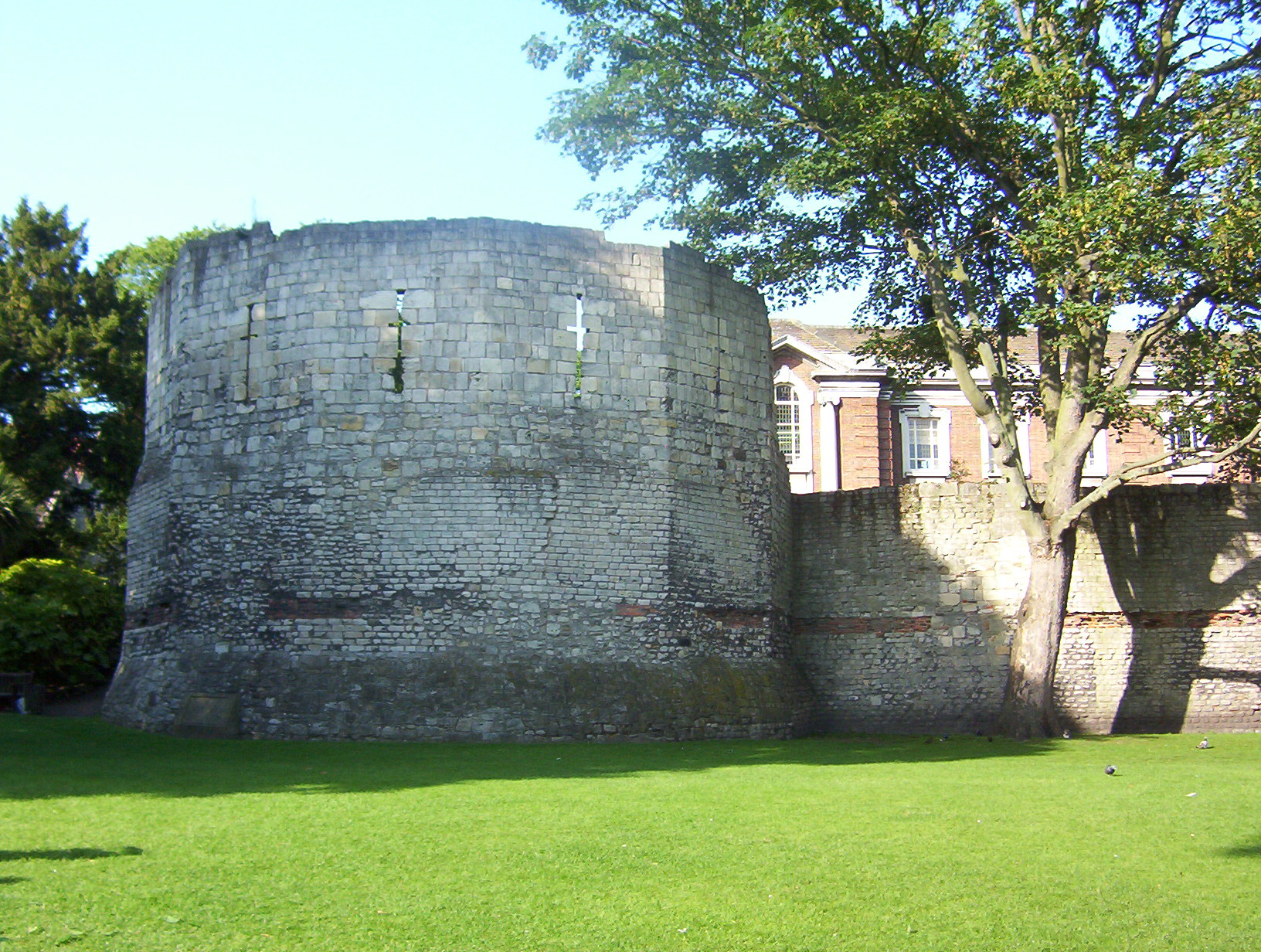|
Eleven-Plus
The eleven-plus (11+) is a standardized examination administered to some students in England and Northern Ireland in their last year of primary education, which governs admission to grammar schools and other secondary schools which use academic selection. The name derives from the age group for secondary entry: 11–12 years. The eleven-plus was once used throughout England and Wales, but is now only used in counties and boroughs in England that offer selective schools instead of comprehensive schools. Also known as the transfer test, it is especially associated with the Tripartite System which was in use from 1944 until it was phased out across most of the UK by 1976. The examination tests a student's ability to solve problems using a test of verbal reasoning and non-verbal reasoning, with most tests now also offering papers in mathematics and English. The intention was that the eleven-plus should be a general test for intelligence (cognitive ability) similar to an IQ test, ... [...More Info...] [...Related Items...] OR: [Wikipedia] [Google] [Baidu] |
Selective School
A selective school is a school that admits students on the basis of some sort of selection criteria, usually academic. The term may have different connotations in different systems and is the opposite of a comprehensive school, which accepts all students, regardless of aptitude. The split between selective and comprehensive education is usually at secondary level; primary education is rarely selective. At the university level, selection is almost universal, but a few institutions practice open admissions or open-door enrollment, allowing students to attend regardless of prior qualification. Australia New South Wales In New South Wales, selective high schools are government schools that select students on the basis of academic ability. Most students enter a selective high school in Year 7, after sitting the Selective High Schools Test in the previous year. The process of entering selective schools is much like that of a university, with students electing their preferences and b ... [...More Info...] [...Related Items...] OR: [Wikipedia] [Google] [Baidu] |
Tripartite System
The Tripartite System was the arrangement of state-funded secondary education between 1945 and the 1970s in England and Wales, and from 1947 to 2009 in Northern Ireland. It was an administrative implementation of the Education Act 1944 and the Education Act (Northern Ireland) 1947. State-funded secondary education was to be arranged into a structure containing three types of school, namely: grammar school, secondary technical school (sometimes described as "technical grammar", or "technical high" schools) and secondary modern school. Not all education authorities implemented the tripartite system; many maintained only two types of secondary school, the grammar and the secondary modern. Pupils were allocated to their respective types of school according to their performance in the 11-plus or the 13-plus examination. It was the prevalent system under the Conservative governments of the 1951 to 1964 period, but was actively discouraged by the Labour government after 1965. It w ... [...More Info...] [...Related Items...] OR: [Wikipedia] [Google] [Baidu] |
Mathematics
Mathematics is an area of knowledge that includes the topics of numbers, formulas and related structures, shapes and the spaces in which they are contained, and quantities and their changes. These topics are represented in modern mathematics with the major subdisciplines of number theory, algebra, geometry, and analysis, respectively. There is no general consensus among mathematicians about a common definition for their academic discipline. Most mathematical activity involves the discovery of properties of abstract objects and the use of pure reason to prove them. These objects consist of either abstractions from nature orin modern mathematicsentities that are stipulated to have certain properties, called axioms. A ''proof'' consists of a succession of applications of deductive rules to already established results. These results include previously proved theorems, axioms, andin case of abstraction from naturesome basic properties that are considered true starting poin ... [...More Info...] [...Related Items...] OR: [Wikipedia] [Google] [Baidu] |
Standard Deviation
In statistics, the standard deviation is a measure of the amount of variation or dispersion of a set of values. A low standard deviation indicates that the values tend to be close to the mean (also called the expected value) of the set, while a high standard deviation indicates that the values are spread out over a wider range. Standard deviation may be abbreviated SD, and is most commonly represented in mathematical texts and equations by the lower case Greek letter σ (sigma), for the population standard deviation, or the Latin letter '' s'', for the sample standard deviation. The standard deviation of a random variable, sample, statistical population, data set, or probability distribution is the square root of its variance. It is algebraically simpler, though in practice less robust, than the average absolute deviation. A useful property of the standard deviation is that, unlike the variance, it is expressed in the same unit as the data. The standard deviation o ... [...More Info...] [...Related Items...] OR: [Wikipedia] [Google] [Baidu] |
Normal Distribution
In statistics, a normal distribution or Gaussian distribution is a type of continuous probability distribution for a real-valued random variable. The general form of its probability density function is : f(x) = \frac e^ The parameter \mu is the mean or expectation of the distribution (and also its median and mode), while the parameter \sigma is its standard deviation. The variance of the distribution is \sigma^2. A random variable with a Gaussian distribution is said to be normally distributed, and is called a normal deviate. Normal distributions are important in statistics and are often used in the natural and social sciences to represent real-valued random variables whose distributions are not known. Their importance is partly due to the central limit theorem. It states that, under some conditions, the average of many samples (observations) of a random variable with finite mean and variance is itself a random variable—whose distribution converges to a normal dist ... [...More Info...] [...Related Items...] OR: [Wikipedia] [Google] [Baidu] |
Standard Score
In statistics, the standard score is the number of standard deviations by which the value of a raw score (i.e., an observed value or data point) is above or below the mean value of what is being observed or measured. Raw scores above the mean have positive standard scores, while those below the mean have negative standard scores. It is calculated by subtracting the population mean from an individual raw score and then dividing the difference by the population standard deviation. This process of converting a raw score into a standard score is called standardizing or normalizing (however, "normalizing" can refer to many types of ratios; see normalization for more). Standard scores are most commonly called ''z''-scores; the two terms may be used interchangeably, as they are in this article. Other equivalent terms in use include z-values, normal scores, standardized variables and pull in high energy physics. Computing a z-score requires knowledge of the mean and standard ... [...More Info...] [...Related Items...] OR: [Wikipedia] [Google] [Baidu] |
Wechsler
Wechsler (German: ''exchanger'') may refer to: Surnames * David Wechsler, psychologist * Henry Wechsler, researcher * Herbert Wechsler, legal scholar * James Wechsler, journalist * Nick Wechsler (actor), actor * Nick Wechsler (film producer), producer * Benjamin Fondane, born ''Benjamin Wechsler'' or ''Wexler'', writer Other * Wechsler School Wechsler School is a historic school in Meridian, Mississippi erected in 1894. The school was the first brick public school building in Mississippi built with public funds for African-American children. It originally served primary through eighth ... See also * * Wexler (other) {{disambig, surname German words and phrases German-language surnames Jewish surnames Occupational surnames ... [...More Info...] [...Related Items...] OR: [Wikipedia] [Google] [Baidu] |
Common Entrance Examination
Common Entrance Examinations (commonly known as CE) are taken by independent school pupils in the UK as part of the selective admissions process at age 13, though ten independent schools do select at 11 using different test papers. They are set by the Independent Schools Examinations Board. Most of the secondary schools that use Common Entrance for admission are "public schools"; most of the schools that routinely prepare their pupils for Common Entrance are preparatory schools. Both kinds of schools are normally fee-paying, that is, they are particular kinds of independent schools. The examination papers are prepared by the board, but the scripts are marked by the schools concerned; and all other aspects of the admissions process are handled independently by each school. Independent Schools Examinations Board The Independent Schools Examinations Board (ISEB) offers examinations for pupils transferring from junior to independent senior school at the ages of 11+ and 13+ in ... [...More Info...] [...Related Items...] OR: [Wikipedia] [Google] [Baidu] |
Public School (United Kingdom)
In England and Wales (but not Scotland), a public school is a fee-charging endowed school originally for older boys. They are "public" in the sense of being open to pupils irrespective of locality, denomination or paternal trade or profession. In Scotland, a public school is synonymous with a state school in England and Wales, and fee-charging schools are referred to as private schools. Although the term "public school" has been in use since at least the 18th century, its usage was formalised by the Public Schools Act 1868, which put into law most recommendations of the 1864 Clarendon Report. Nine prestigious schools were investigated by Clarendon (including Merchant Taylors' School and St Paul's School, London) and seven subsequently reformed by the Act: Eton, Shrewsbury, Harrow, Winchester, Rugby, Westminster, and Charterhouse. Public schools are associated with the ruling class. Historically, public schools provided many of the military officers and administrator ... [...More Info...] [...Related Items...] OR: [Wikipedia] [Google] [Baidu] |
York
York is a cathedral city with Roman Britain, Roman origins, sited at the confluence of the rivers River Ouse, Yorkshire, Ouse and River Foss, Foss in North Yorkshire, England. It is the historic county town of Yorkshire. The city has many historic buildings and other structures, such as a York Minster, minster, York Castle, castle, and York city walls, city walls. It is the largest settlement and the administrative centre of the wider City of York district. The city was founded under the name of Eboracum in 71 AD. It then became the capital of the Roman province of Britannia Inferior, and later of the kingdoms of Deira, Northumbria, and Jórvík, Scandinavian York. In the Middle Ages, it became the Province of York, northern England ecclesiastical province's centre, and grew as a wool-trading centre. In the 19th century, it became a major railway network hub and confectionery manufacturing centre. During the Second World War, part of the Baedeker Blitz bombed the city; it ... [...More Info...] [...Related Items...] OR: [Wikipedia] [Google] [Baidu] |
Harrogate
Harrogate ( ) is a spa town and the administrative centre of the Borough of Harrogate in North Yorkshire, England. Historically in the West Riding of Yorkshire, the town is a tourist destination and its visitor attractions include its spa waters and RHS Harlow Carr gardens. away from the town centre is the Yorkshire Dales National Park and the Nidderdale AONB. Harrogate grew out of two smaller settlements, High Harrogate and Low Harrogate, in the 17th century. For three consecutive years (2013–2015), polls voted the town as "the happiest place to live" in Britain. Harrogate spa water contains iron, sulphur and common salt. The town became known as 'The English Spa' in the Georgian era, after its waters were discovered in the 16th century. In the 17th and 18th centuries its 'chalybeate' waters (containing iron) were a popular health treatment, and the influx of wealthy but sickly visitors contributed significantly to the wealth of the town. Harrogate railway station and Har ... [...More Info...] [...Related Items...] OR: [Wikipedia] [Google] [Baidu] |




